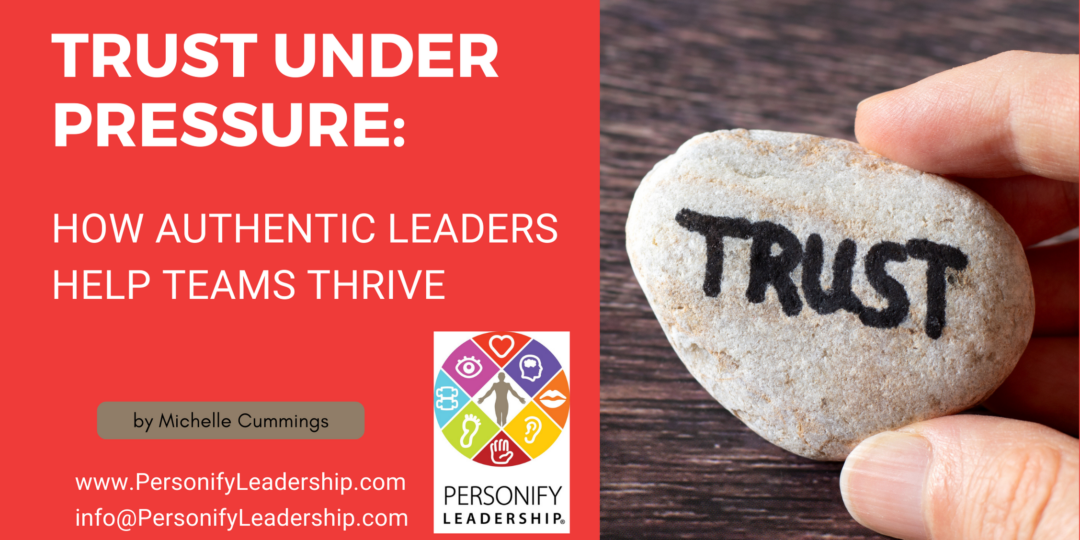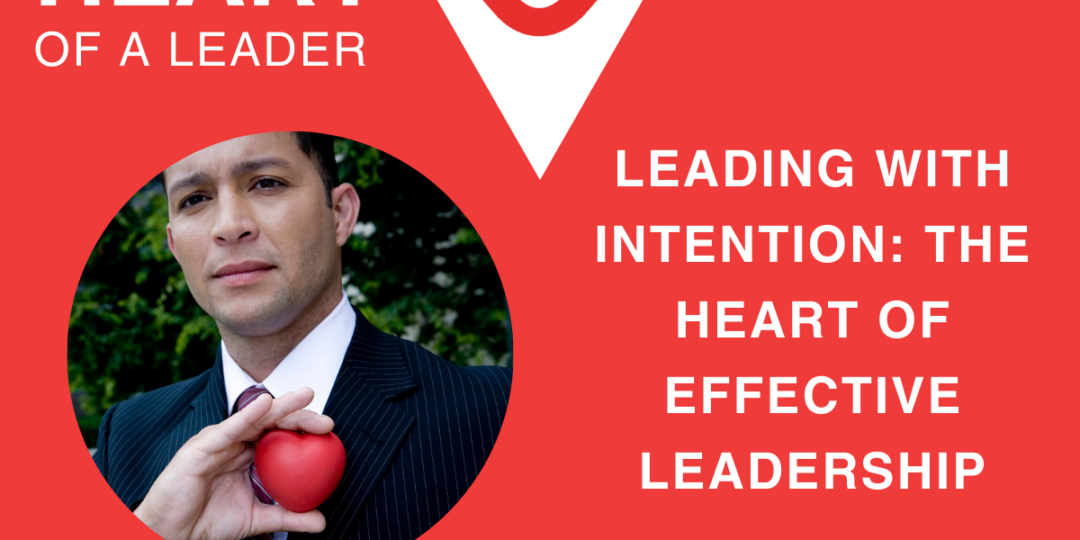Bridging the Intention–Behavior Gap
- Apr 03, 2025
- By personifyadmin
- In Newsletters
- 0 Comments
We all want to believe that good intentions make good leaders. And intention does matter—it’s where leadership begins. In our Heart of a Leader module, we focus on leading from a place of care, connection, and integrity. But intention alone doesn’t always shape the experience others have of us. That’s where the gap begins—the space between what we meant and what actually happened. That’s the intention–behavior gap, and we’ve all felt it on both sides.
Research by Rhodes, Pfaeffli Dale, and Mansell explores this very gap, showing that the strength of an intention plays a key role. Strong intentions are more likely to predict consistent behavior, and they tend to hold steady over time. But they also come with a risk: when an intention becomes too rigid, it can close us off to feedback or new perspectives. A leader may be so focused on achieving a goal that they stop noticing how their behavior is landing—or whether it still reflects their original values.
That’s why, in the Heart module, we teach leaders to pay attention to their signals—tone, posture, word choice, and energy. These are the silent messengers that often speak louder than our intentions. You may want to support your team, but if your voice is tense or your body language feels rushed, your intention won’t come through. This is where the Signal Check tool comes in. It’s a simple pause to ask, “What do I want people to feel right now, and does my presence reflect that?”
Another key strategy is using Intention to Impact thinking. Instead of just setting a goal, we encourage leaders to ask: What experience do I want others to have? This kind of reflection helps shift the focus from task to relationship, from outcome to impact. When we connect our intentions to how others feel and perform, our leadership becomes more human—and more effective.
And of course, none of us will get it right all the time. We will miss the mark. What matters most is noticing when our signals don’t align with our purpose and choosing to realign with intention. That choice, made moment by moment, is where trust is built and credibility is earned. Leaders who regularly reflect, adjust, and lead with heart make it easier for their teams to do the same.
Bridging the intention–behavior gap takes more than good ideas—it takes awareness and practice. But when leaders are willing to pause, reflect, and stay grounded in what truly matters, their actions begin to match their values. And that’s when leadership becomes transformational—not just for the leader, but for everyone they influence.
By Michelle Cummings
Founder, CEO & Chief Creative Officer
Personify Leadership
Trust Under Pressure: How Authentic Leaders Help Teams Thrive
- Apr 03, 2025
- By personifyadmin
- In Newsletters
- 0 Comments
Trust is the foundation of leadership—but it’s tested most when pressure is high. In the Heart of a Leader module from the Personify Leadership Core Program, leaders are taught to lead with clear intention: to act in the best interest of others and stay aligned with their values. Authenticity is not just about being “real”—it’s about showing up in a way that reflects who you are and what you stand for, even in difficult moments.
When stress rises and uncertainty creeps in, teams begin to look to their leader for cues. This is when trust is either reinforced or quietly eroded. The Heart Module challenges leaders to ask, “What signals am I sending?”—through tone, posture, presence, and action. If those signals match a leader’s stated intention, it builds stability and confidence. If they don’t, even small gaps in behavior can shake a team’s sense of safety.
Leaders who are aware of their signals and take time to reflect before acting are more likely to stay in alignment. When team members feel that their leader is grounded, honest, and consistent—even in high-stakes moments—they feel safer, more motivated, and more willing to speak up. That emotional safety is key to team engagement and performance. As the module teaches: people don’t just hear your intention—they feel it.
Of course, no leader gets it right every time. When trust is strained, it doesn’t have to stay broken. Leaders have many opportunities for making things right—starting with listening fully, owning the impact, and clarifying your true intention. Leaders who take responsibility and follow through with consistent actions don’t just repair relationships—they deepen them.
In times of pressure, your authenticity becomes your greatest tool. Teams thrive when they can trust that their leader’s values won’t disappear under stress. Leading with intention, acting with integrity, and staying present in the hard moments—that’s how authentic leaders build lasting trust.
~Michelle Cummings
Founder, CEO and Chief Creative Officer
Personify Leadership
Leadership isn’t just about what you say. It’s about how you show up—every day, in every interaction. Your body language, tone, and energy send signals long before your words land.
Think about it: Have you ever walked into a room and felt tension, even before anyone spoke? Or trusted someone more simply because they looked calm, open, and engaged? These are leadership signals. And people are reading them, whether you mean to send them or not.
Your team is constantly asking themselves:
- Can I trust this person?
- Do they mean what they say?
- Do they care about me?
If your tone doesn’t match your intention—or your posture shows frustration instead of curiosity—you may be sending the wrong message. That’s when misalignment happens, and trust starts to erode.
Try This:
Before your next one-on-one or team meeting, pause.
Ask yourself:- What’s my intention in this moment?
- Does my body, face, and voice reflect that?
Even a 30-second reset can shift how others receive you.
Leaders who are aware of their signals—and adjust them to match their values—create safety, trust, and stronger relationships.
So, how are you showing up today?
Leading with Intention: The Heart of Effective Leadership
- Sep 04, 2024
- By personifyadmin
- In Newsletters
- 0 Comments
At the core of successful leadership lies intention—the purpose behind every action a leader takes. This month we’re focusing on the first of our eight competencies, the Heart of a Leader.
The “Heart of a Leader” module in the Personify Leadership program emphasizes this, helping leaders align their intentions with their actions. Leaders who consistently focus on their team’s best interests build stronger connections and foster trust within their organizations. This trust, formed through intentional and transparent leadership, is the foundation of effective and respected leadership.
Understanding the signals you send is essential to ensuring that your actions reflect your true intentions. Often, a leader’s behavior sends unintended messages, leading to misalignment between what is said and what is done. In the “Heart of a Leader” module, leaders are encouraged to become more aware of the signals they send. Whether leading a team meeting or giving feedback, a leader must ensure their actions reflect their intent to support and uplift the team, not just drive personal success.
Trust in leadership also hinges on the “Law of Reciprocity.” As leaders, the signals you send and the actions you take will often be mirrored by your team. This reciprocal relationship underscores the importance of setting positive examples and leading by example. Leaders who prioritize the well-being of others often find their teams responding with increased loyalty, dedication, and a shared commitment to organizational goals.
Ultimately, intentional leadership is about aligning personal, team, and organizational interests. Leaders must regularly reflect on their actions and their impact on those they lead. By doing so, they can foster a work environment built on trust, where every team member feels valued, respected, and motivated to contribute. Leading with intention ensures that a leader’s heart is always in the right place, guiding their team toward collective success.
Questions to ask yourself:
- Q1: How can you become more aware of the signals you are sending to your teams?
- Q2: What practical steps can you take to build a trust-rich environment using the Law of Reciprocity?
- Q3: How does aligning personal and organizational interests benefit long-term team success?
What would you add to this list?
If you are interested in building more skills in this area, consider registering for our next Open Enrollment course.
Tag: Heart of a Leader
© 2012-2025 Personify Leadership. All Rights Reserved.





Recent Comments